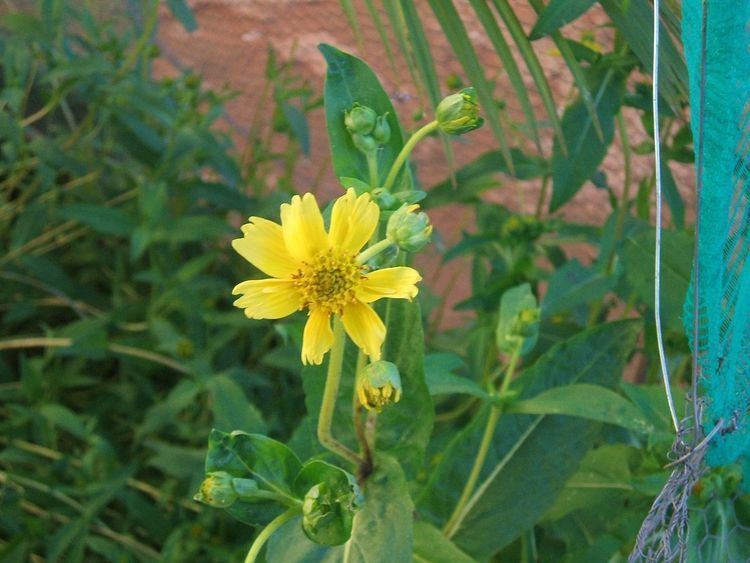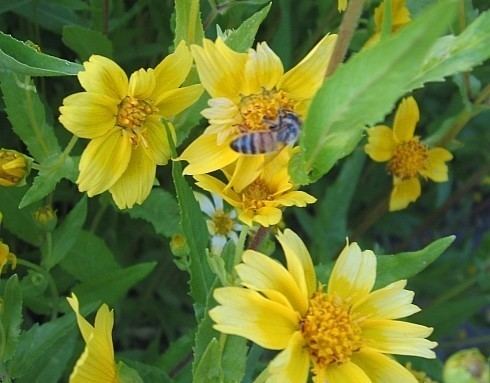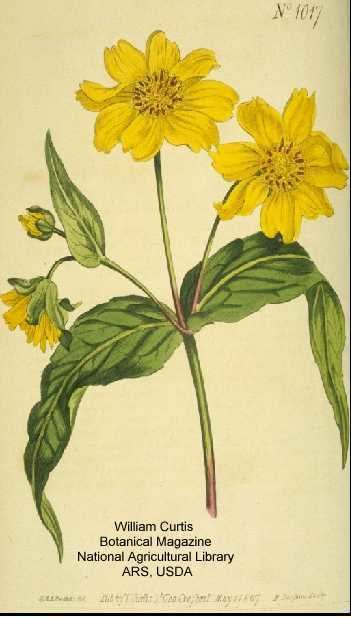Kingdom Plantae Rank Species | Genus Guizotia Higher classification Guizotia | |
 | ||
Similar Suet, Safflower, Pili, Sunflower seed, Common sunflower | ||
Guizotia abyssinica is an erect, stout, branched annual herb, grown for its edible oil and seed. Its cultivation originated in the Ethiopian highlands, and has spread to other parts of Ethiopia. Common names include: noog/nug (Ethio-Semitic ኑግ nūg); niger, nyger, nyjer, or Niger seed; ramtil or ramtilla; inga seed; and blackseed, khursani in Marathi Gujitil in Assamese, "Huchellu" and "Gurellu" in Kannada, "Karala" or "Karale" in Marathi
Contents

Seed

Native to Ethiopia and Malawi, niger seed is also grown in India. Niger seed resembles sunflower seeds in shape, but is smaller in size and black. It bears a fairly thick, adherent seed coat and can be stored for up to a year without deterioration. Niger seed contains proteins, oil and soluble sugars. Niger seeds are used as bird feed world wide. Commercial niger seed is grown in Africa, India and other areas of southeast Asia, and the seed is imported around the world as a popular type of birdseed. Before it is imported, however, niger seed is sterilized by intense heat to prevent germination of any additional seeds that may be part of the mix. Treated niger seed may germinate but would typically be stunted, limiting its spread and offering less of a threat to native plants.
Basic Nutritional Components of Niger Seeds
Cultivation

Requiring moderate rainfall between 1000–1250 mm annually, niger seed needs moist soil to grow properly. Niger should be grown in light black soils or brownish loam with sufficient depth but it can be also be grown on well drained heavy soils or rocky laterite soils. It can grow in semi-shade or without shade. The yield of seeds will average 300–400 kg/hectare under favorable conditions but can produce up to 600 kg/hectare. It gives a dependable yield even under unfavorable climatic conditions.

The seed, technically a fruit called an achene, is often sold as birdseed as it is a favourite of finches, especially the goldfinch and the Greenfinch. In the birdseed market, Nyjer is often sold or referred to as thistle seed. This is a misnomer resulting from early marketing of the seed as "thistle" to take advantage of the finches' preference for thistle.

The Wild Bird Feeding Industry (WBFI) has trademarked the name Nyjer so as not to confuse it with the less desirable thistle seed.
In 1982 the USDA ordered that imported Niger seed must be heat sterilized to kill the contaminant dodder seed. This treatment, however, was insufficient to kill seeds of other Federal noxious weeds, including Asphodelus fistulosus (onion weed), Digitaria spp. (includes African couchgrass), Oryza spp. (red rice), Paspalum scrobiculatum (kodo millet), Prosopis spp. (includes mesquites), Solanum viarum (tropical soda apple), Striga spp. (witchweed), and Urochloa panicoides (liver-seed grass). In 2001 a new treatment required that imported Niger seed must be heat treated at 120 °C (248 °F) for 15 minutes.
In 2002 the "EarlyBird" variety of Guizotia abyssinica with a crop maturity of 65 days was developed and adapted to grow in the United States. The "EarlyBird" variety of Guizotia abyssinica is protected by U.S.D.A. Plant Variety Protection Certificate Number 9900412. A second variety of Guizotia abyssinica submitted to the U.S.D.A. for Plant Variety Protection (Application Number 200500140) called "Earlybird 50" has a crop maturity of 50 days and is a shorter, more dense plant with a higher yield and is less susceptible to lodging than the "EarlyBird" variety. Both varieties have short enough maturities to make production feasible in many U.S. growing regions. Guizotia abyssinica is not a Federal noxious weed and is now in commercial agricultural production in the United States often grown as a first or second crop before or after wheat, corn, soybeans, and cucurbits. Niger is self-sterile and requires bees for cross pollination.
Oil
Niger seed yields about 30-35% of its weight in oil which is clear, slow-drying, and edible. Niger seed oil is polyunsaturated semi-drying oil. It has pale yellow or orange color with a nutty taste and sweet odor. Raw oil has low acidity and can be used directly for cooking. Normally it has a poor shelf life and will become rancid when stored for a long period. Its fatty acid composition is similar to sunflower oil and has high content of linoleic acid. It is used substitute for olive oil and can be mixed with linseed oil. The presence of Linoleic acid varies from 45.0-65.0% depending on harvested soil conditions and seed variety. The physical character of oil and its fatty acids composition is furnished following tables.
Physical Characteristics of Oil
Fatty acid composition of Niger seed oil
Culinary and medicinal uses
Niger seeds are also used in human consumption in southern parts of India. In Karnataka, Andhra Pradesh and Maharashtra, Niger seeds (called valisalu/valasulu in Telugu, uchellu/gurellu in Kannada, and Karale in Marathi) are used to make a dry chutney which is used as an accompaniment with breads (Chapathi). They are also used as a spice in some curries. In Ethiopia, an infusion made from roasted and ground Niger seeds, sugar and water, is used in treating common colds.
Other uses
A paste or gruel made from ground Niger seed, mixed with ground flaxseeds (Amharic: talvah), is traditionally used in Ethiopia in treating leather.
The seed's oil is widely used for industrial purposes such as soap making, paints preparations and preparation of different types of emulsions.
The seed is used as bird food. As the seeds are so small, specialised bird feeders are manufactured for nyjer seed. In the United Kingdom the seeds attract finches and siskins.
